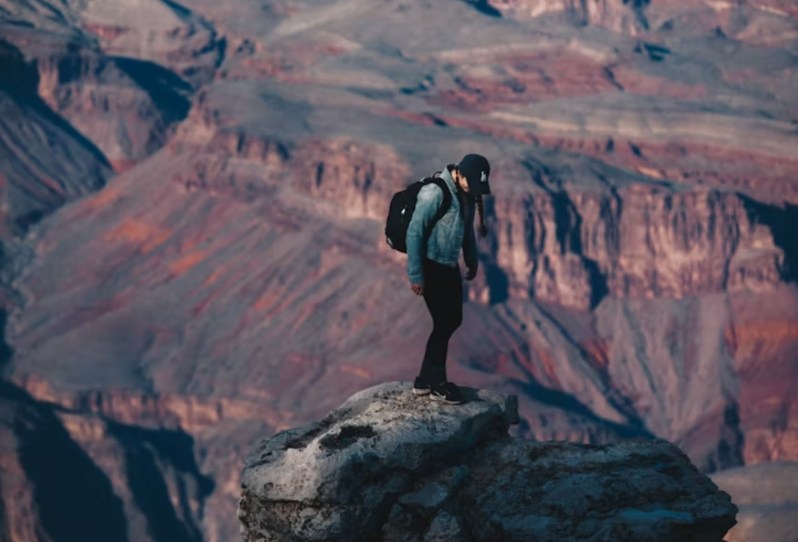America’s great nature, ranging from the most and least visited national parks, can take our breath away, stop us in our tracks, and remind us of the vast wildness of where we come from. While this unadulterated nature is certainly awe-inspiring, it can also be dangerous, especially if unprepared.
So, let’s talk all about park safety. From seeing which parks are safest to explore to those that carry the most risk, you’ll learn what you need to know to have a safe and enjoyable trip.

The safest parks for your next adventure
You may be wondering, what makes a park more secure than others? Firstly, the maintenance, signage, and accessibility features of a park have a big role to play in their safety. Staff is important as well, as having enough rangers to patrol and protect visitors can make a difference.
Statistics also allow us to get a deeper look at what parks are least likely to result in injury.
The scales measuring national park safety scores usually range from 0 to 10. A higher score means safer, while a lower score suggests higher risk.
With that said, here are the top three safest national parks based on comprehensive park data gathered and analyzed by KUHL:

1. Gateway Arch National Park
The Gateway Arch National Park is known for its impressive 630-foot monument, and despite being one of the most popular bucket list destinations for St. Louis, it’s quiet on the injury front. It ranks at 7.8, making it a beacon of safety for visitors.
This is an urban park that’s easily accessible when emergencies take place. Between 2007 and 2022, almost 3 million people visited this park, and no missing person reports were made for the site. The park also has a great ranger-to-visitor ratio, so you’ll be well-protected.

2. Petrified Forest National Park
The gorgeous and expansive Petrified Forest National Park in Arizona is a paradise for exploration, with an impressive safety score of 7.57. This place is known for its fossils and stone-like trees, preserved for over 200 million years, that bring visitors back in time.
This park gets one-third of the annual visitors of Gateway Arch National Park — just under 10 million people. These lower numbers naturally reduce the amount of accidents, but the relatively flat terrain also plays a role in creating a safe environment.
Without deep canyons, steep cliffs, or dangerous wildlife, you can explore this park without worrying about the likelihood of an accident.

3. Kobuk Valley National Park
While many Alaskan National Parks are more dangerous than those in the contiguous states, the Kobuck Valley National Park has a score of 7.54, giving it the distinction of being the third safest park. There have been zero reported deaths in the park in over a decade, and the park is frequented by slightly more than 10,000 people annually.
This is a truly remote park with few trails or facilities, but the landscape is other-worldly and worth the trek, given the overall low risk. Seven dedicated park rangers can assist and track visitors, and there are plenty of safe and serene adventures along the Kobuk River and rolling dunes.

Which are the most dangerous national parks?
As you may have gathered from our not-so-suspenseful spoiler title, the Grand Canyon is a relatively dangerous park. It ranks as the riskiest due to its 165 deaths in the past 16 years. This averages to just over 10 deaths a year, which is a number that can be too high for comfort.
Following the Grand Canyon, the Wrangell-St. Elias National Park has a safety score of 0.63, and the Isle Royale National Park follows closely behind with a score of 0.66. The North Cascades National Park, the fourth on the list of most dangerous parks, has had 24 deaths between 2007 to 2022.
Popular locations like Yosemite National Park, Grand Teton National Park, and Yellowstone National Park are safer, but both report occasional cases of missing persons.
Despite these numbers, it’s not very likely that you’ll be a statistic. Dozens of incidents spread out over more than a decade are bound to occur, considering that hundreds of millions of people from around the world enjoy national parks and come to these locations.

Stay safe in national parks with these tips
Luckily, taking the proper precautions can drastically reduce the risk you carry when enjoying the best of the great outdoors. Follow these expert tips to stay safe in National Parks:
- Be careful with photography and videography: Selfies do more than distract you from the environment. They can also cause slips, bumps, or trips that could be dangerous.
- Stay away from restricted areas: While it can feel liberating to go out on your own, there’s usually a good reason that park areas are closed down. Heed warnings and talk to rangers before exploring on your own.
- Let people know where you are: Emergencies happen, but even a sprained ankle can become life or death when you’re alone. Let at least one person know your itinerary when you’re headed to a national park.
- Plan for weather: It’s not uncommon to experience multiple seasons in a single-day visit to a park, so plan your clothing and transportation accordingly.
If you’re going into remote areas alone, study solo hiking tips that will prepare you for anything coming your way. Investing in backcountry safety gear can enlist innovation and technology as handy safety tools.
Adventure is a delicate balance between excitement and risk, so make sure to embrace a bit of each for a well-balanced, successful trip. The national park system has been developed to support visitors, so take advantage and ask for help whenever you’re in doubt about the safest way to explore.




